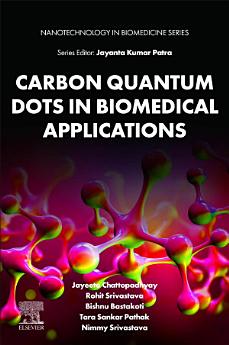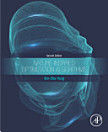Carbon Quantum Dots in Biomedical Applications
About this ebook
About the author
Dr Jayeeta Chattopadhyay obtained her Ph.D. in New Energy Engineering with best doctoral thesis award from Seoul National University of Science and Technology, S. Korea (2010) under the supervision of Prof. Jae Ek Son, Former president Korea Institute of Energy Research (KIER), S. Korea and Prof. Daewon Pak, Dean, Department of Environmental Engineering, Seoul National University of Science and Technology, S. Korea. She obtained the prestigious Fast Track Young Scientist Award (2010) and Early Career Research Award (2017) from Department of Science and Technology, Govt. of India. Dr. Jayeeta has more than 25 publications and the is owner of two international patents. She has authored 6 books and is presently working as University Research Coordinator and Senior Assistant Professor, Amity University, Jharkhand, Ranchi, India.
Dr Srivastava has worked as a post-doctoral fellow at IIT Bombay and IISc. Bangalore. During his 3rd post-doctoral training at Harvard University USA, he worked on a project which was completely funded by Repsol (A global energy company based in Madrid Spain). At Harvard, he worked with Prof. Juan Parez-Mercader, who is an Elected Member of the International Academy of Astronautics and of the European Academy of Arts and Sciences, and was the first Director of Centro de Astrobiología (CAB), Spain. In 2016, Dr. Srivastava was awarded best scientific researcher award by Association of Scientist, Developers and Faculties (ASDF) global in Michigan, USA; Young Researcher Award in Energy Storage & Conversion by Venus International Foundation, India; and Distinguished Young Researcher Award by GreenThinkerZ Society, India. He has edited 2 books and his research interests are nanostructure materials synthesis such as metal nanoparticles (NPs), quantum dots (QDs), carbon-based nanomaterials and characterization of these nanomaterials by various analytical and microscopy techniques.
Assistant Professor Bishnu Bastakoti works at North Carolina Agricultural and Technical State University, USA.
Associate Professor Tara Sankar Pathak works in the Chemistry Department, Surendra Institute of Engineering and Management, Siliguri, West Bengal, India.
Assistant Professor Nimmy Srivastavais Program Leader, Amity Institute of Biotechnology, Amity University Jharkhand, Amity Institute of Biotechnology, Amity University Jharkhand, Niwaranpur, Ranchi, Jharkhand.



